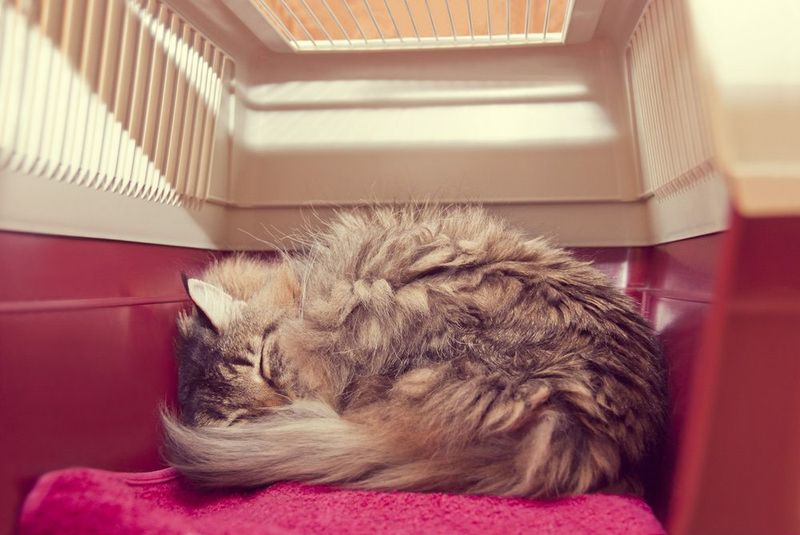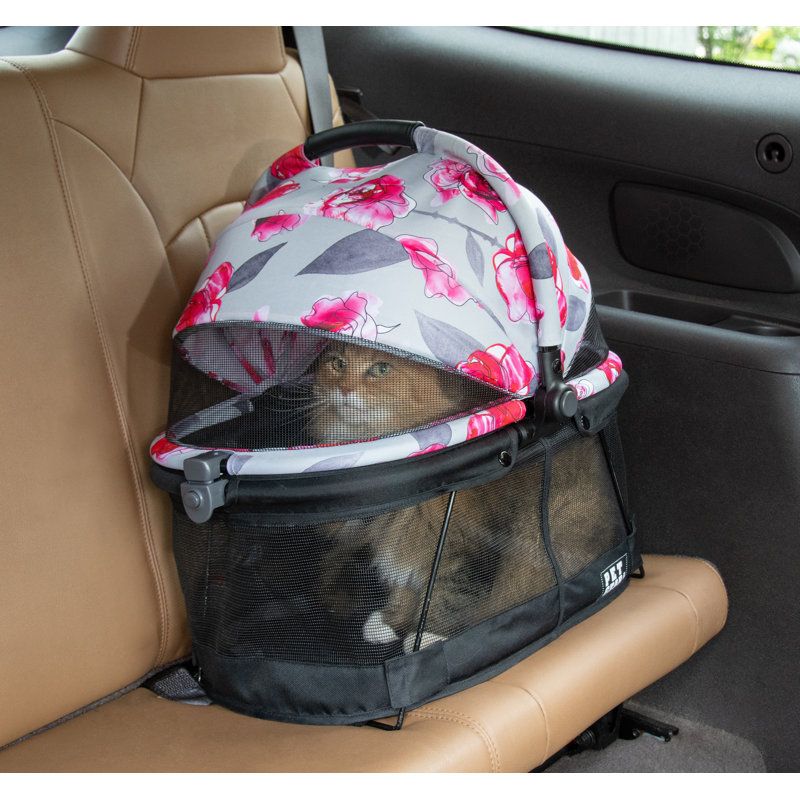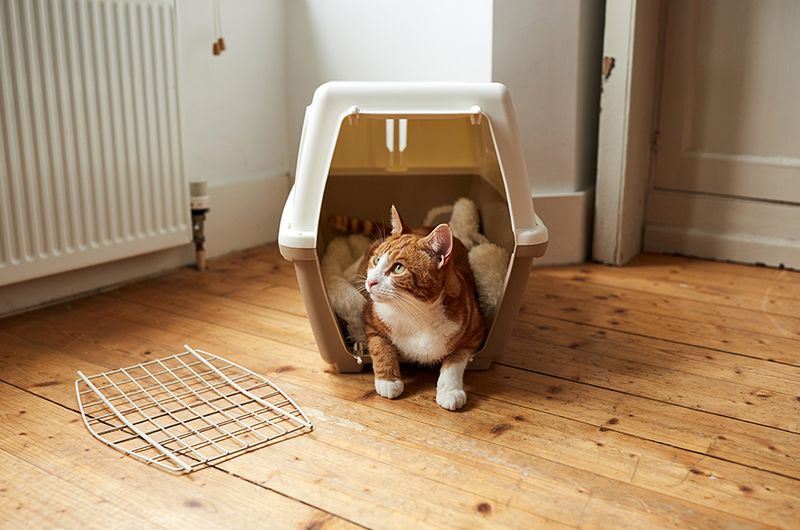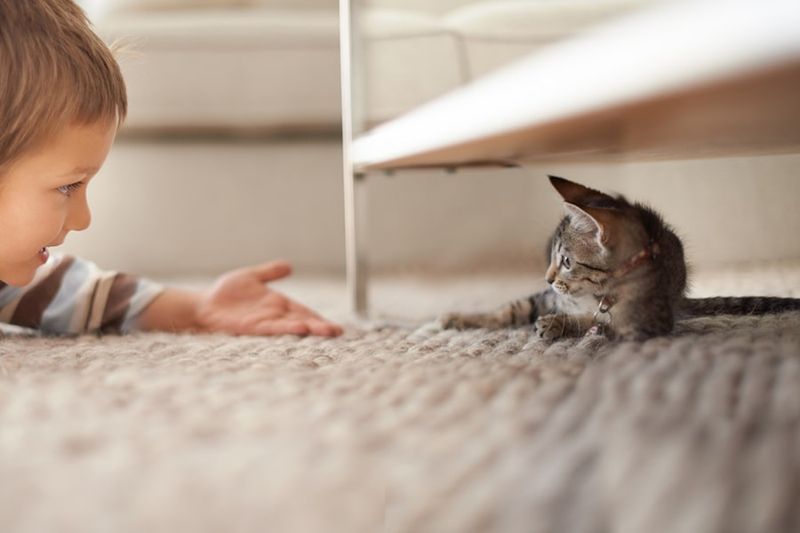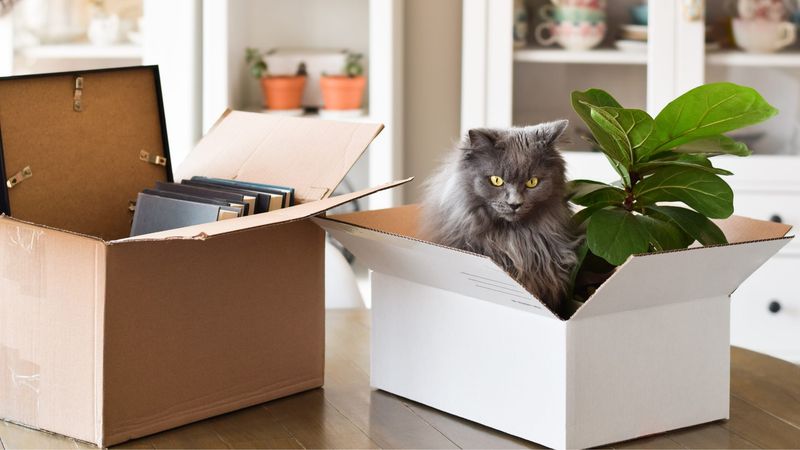📖 Table of Content:
- 1. Prepare Early and Get Your Cat Used to the Carrier
- 2. Create a “Safe Room” for Packing Chaos
- 3. Visit the Vet Before the Move
- 4. Update Identification and Microchip Info
- 5. Transport With Comfort and Calm
- 6. Set Up a Cat-Safe Room in the New Home First
- 7. Gradually Let Them Explore the New Home
- 8. Maintain Routine and Give Lots of Reassurance
Moving to a new home can be one of life’s most exciting transitions, but for cats, it’s usually the opposite. Known for their love of routine and territory, most felines don’t take kindly to change, and a move can leave them anxious, withdrawn, or even physically ill. Fortunately, with some foresight and care, you can help your kitty handle the journey with much less stress.
Cats don’t just notice boxes piling up—they sense energy shifts, unfamiliar smells, and disrupted routines. This means that your preparations shouldn’t start on moving day itself but rather weeks before. From getting them used to their carrier to setting up a cozy corner in your new home, every little step makes a big difference in their emotional well-being.
This article breaks down the entire process into eight clear, manageable steps. Whether you’re moving across town or cross-country, these tips are designed to protect your cat’s comfort and health. Each step is rooted in feline behavior science and tested by pet owners who’ve moved successfully with their furry companions. Let’s dive into how you can make this big change feel like a calm purr rather than a panicked hiss. Because at the end of the day, a happy cat makes for a much smoother move.
1. Prepare Early and Get Your Cat Used to the Carrier
Begin by making the carrier a part of your cat’s everyday environment. Instead of pulling it out only when it’s time to visit the vet, leave it open and accessible in a calm area of your home. Sprinkle treats inside or place your cat’s favorite blanket or toy within to make it inviting. Over time, they’ll associate it with comfort rather than fear. If they still seem hesitant, try feeding them meals inside to build a positive association. You can even rub a little catnip around the inside to encourage curiosity. Gradual exposure is key—rushing this step may trigger anxiety that sticks.
2. Create a “Safe Room” for Packing Chaos
Designating a quiet room for your cat during the packing phase can help protect them from the stress of moving. Choose a space away from the hustle and bustle where movers, boxes, and noise won’t disturb them. Fill it with their litter box, food and water bowls, toys, and a soft blanket or bed. Close the door and post a sign to ensure no one enters by mistake. This small gesture gives your cat a sense of stability amid the growing disorder. You’ll also reduce the chances of your cat slipping out during open-door moments. Consider playing soft music to mask external sounds and soothe their nerves.
3. Visit the Vet Before the Move
Scheduling a vet appointment a few weeks before your move is a crucial but often overlooked step. The vet can assess your cat’s physical and emotional readiness for travel. If your cat is prone to travel stress, ask about calming sprays, supplements, or medications. It’s also the perfect time to ensure vaccinations are up-to-date. Request printed copies of your cat’s records in case you need to register with a new vet. Discuss any concerns you have about the journey or adjusting to the new home. Being medically prepared ensures peace of mind for both of you.
4. Update Identification and Microchip Info
Identification is your safety net in case of unexpected escapes during the chaos of moving. Ensure your cat’s collar tag reflects your current phone number and name. If your pet is microchipped, log into the database and update your address and contact details. This small step could be the difference between a lost cat staying lost—or being safely returned. It’s also smart to take a recent, clear photo of your cat just in case. Consider adding a GPS tracker to their collar for added peace of mind. Don’t wait until after the move—it’s better to be prepared in advance.
5. Transport With Comfort and Calm
Comfort during transit begins with the right carrier setup. Line the interior with soft bedding that smells like home—unwashed blankets or clothing work wonders. Right before travel, give your cat time to settle into the carrier in a quiet area. Covering the carrier with a towel can reduce visual stimuli and help them feel safe. Avoid loud music or erratic driving during the ride. If you’re traveling far, plan pit stops for water breaks and litter box use (portable boxes are great). The smoother the journey, the easier the destination feels.
6. Set Up a Cat-Safe Room in the New Home First
Your new home will feel overwhelming to a freshly relocated feline. Upon arrival, set up a quiet, closed-off room just for them before doing anything else. Place familiar items—litter box, food, toys, and bedding—to ground them with recognizable scents. Let them stay in this room for a day or two before introducing new spaces. This technique minimizes sensory overload and gives them a safe space to decompress. Keep the door shut and limit foot traffic so they can adjust at their own pace. This step lays the foundation for a positive new chapter.
7. Gradually Let Them Explore the New Home
Expansion of territory should happen slowly and intentionally. Once your cat seems calm in their initial safe room, crack the door open and let them venture out when they’re ready. Always supervise these first explorations to prevent hiding or injury. Don’t force them into unfamiliar rooms—they’ll move when curiosity wins over fear. Keep all exterior doors and windows shut securely during this time. Gradual exposure helps them build confidence in the new space. The key is to respect their pace, not rush them.
8. Maintain Routine and Give Lots of Reassurance
Consistency is incredibly comforting to cats, especially in times of change. Stick to their normal feeding, playtime, and bedtime routines as much as possible. Your presence is powerful—spend extra time cuddling or playing to reassure them. Refrain from introducing too many new items or changes at once. If they hide or act differently, give them space but remain available. Speak in a calm, encouraging tone whenever you interact. Rebuilding trust and confidence takes time—but patience pays off in purrs.

